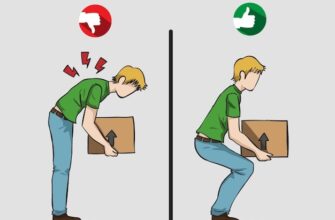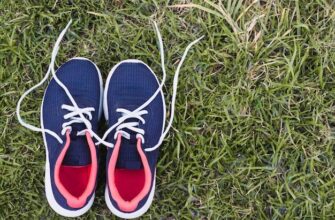How to Relieve Plantar Fasciitis Pain: Effective Tips and Strategies
Introduction
Plantar fasciitis is a common condition that causes pain in the heel and bottom of the foot. It occurs when the plantar fascia, a thick band of tissue that connects the heel bone to the toes, becomes inflamed or irritated. This can be a result of overuse, improper footwear, foot mechanics issues, or certain medical conditions.
If you are dealing with plantar fasciitis, you may be wondering how to find relief. Fortunately, there are several strategies and treatments that can help alleviate the pain and discomfort associated with this condition. In this article, we will explore some of the most effective ways to manage and get rid of plantar fasciitis.
1. Rest and Reduce Activities
When experiencing plantar fasciitis pain, it is essential to rest and reduce the activities that put strain on the feet. Avoid high-impact exercises, such as running or jumping, as these can further aggravate the condition. Instead, opt for low-impact exercises like swimming or cycling until the pain subsides.
2. Stretching and Strengthening Exercises
Performing stretching and strengthening exercises can help alleviate pain and prevent future flare-ups. Some recommended exercises include:
- Toe curls: Sit barefoot and place a towel on the floor in front of you. Use your toes to pick up the towel and scrunch it towards you.
- Calf stretches: Stand facing a wall with one foot in front of the other. Place your hands on the wall and lean forward, keeping your back leg straight. Hold the stretch for 30 seconds and repeat on the other side.
- Plantar fascia stretch: Sit with one leg extended in front of you. Loop a towel around the ball of your foot and gently pull it towards you until you feel a stretch in the arch of your foot. Hold for 30 seconds.
3. Proper Footwear
Wearing supportive and properly fitting footwear is crucial for managing plantar fasciitis. Look for shoes with good arch support, cushioning, and a firm heel counter. Avoid high heels and shoes with flat soles, as they can contribute to worsening symptoms.
4. Orthotic Inserts
Orthotic inserts can provide additional support and cushioning for the foot. These devices can be purchased over-the-counter or custom-made. They can help distribute pressure evenly on the foot and relieve stress from the plantar fascia.
5. Night Splints
Night splints are worn while sleeping and help stretch the plantar fascia and Achilles tendon. They hold the foot in a dorsiflexed position, preventing the plantar fascia from tightening overnight. This can reduce morning pain and stiffness.
6. Icing the Affected Area
Applying ice to the affected area can help reduce inflammation and provide temporary pain relief. Use an ice pack or a frozen water bottle and gently massage the heel and arch for 15-20 minutes at a time, several times a day.
7. Over-the-Counter Pain Medication
Nonsteroidal anti-inflammatory drugs (NSAIDs) such as ibuprofen or naproxen sodium can help alleviate pain and reduce inflammation in the plantar fascia. However, it is essential to use them as directed and consult with a healthcare professional if you have any underlying medical conditions.
8. Physical Therapy
Physical therapy can be beneficial in treating plantar fasciitis. A physical therapist can provide specific exercises, stretches, and techniques to relieve pain, improve flexibility, and strengthen the foot and ankle muscles.
9. Extracorporeal Shockwave Therapy
Extracorporeal shockwave therapy (ESWT) is a non-invasive treatment option for plantar fasciitis. It involves the delivery of shockwaves to the affected area, which stimulates healing and reduces pain. ESWT is typically reserved for persistent cases that do not respond to conservative treatments.
10. Corticosteroid Injections
In severe cases, corticosteroid injections may be recommended to reduce inflammation and provide immediate pain relief. However, these injections are typically used as a last resort due to potential side effects and the risk of weakening the plantar fascia.
FAQs
Q1. How long does it take for plantar fasciitis to heal?
A1. The healing time for plantar fasciitis can vary depending on the severity of the condition and the individual’s response to treatment. With appropriate care and adherence to recommended treatments, most people experience significant improvement within several months.
Q2. Can I still exercise with plantar fasciitis?
A2. It is generally recommended to avoid high-impact exercises that put strain on the feet during the acute phase of plantar fasciitis. However, low-impact exercises that do not exacerbate the pain, such as swimming or cycling, can be continued. Always consult with a healthcare professional before starting or modifying an exercise routine.
Q3. Can plantar fasciitis go away on its own?
A3. Plantar fasciitis may resolve on its own with rest, stretching, and proper footwear. However, some cases may require additional treatments or interventions to achieve complete resolution of symptoms.
Q4. Are there any natural remedies for plantar fasciitis?
A4. While there are no definitive natural remedies for plantar fasciitis, some individuals find relief from home remedies such as applying heat or cold packs, using essential oils, or utilizing plantar fasciitis-specific exercises and stretches.
Q5. Can weight gain contribute to plantar fasciitis?
A5. Excess weight can increase the strain on the plantar fascia and contribute to the development or exacerbation of plantar fasciitis. Maintaining a healthy weight can help reduce stress on the feet and minimize the risk of developing this condition.
Q6. Can wearing high heels cause plantar fasciitis?
A6. Wearing high heels regularly can alter the natural alignment of the foot and increase pressure on the plantar fascia, leading to the development of plantar fasciitis. It is advisable to limit high heel usage and choose supportive footwear instead.
Q7. Can orthotics cure plantar fasciitis?
A7. While orthotics can provide significant relief and help manage plantar fasciitis symptoms, they may not cure the condition entirely. Orthotics are designed to provide support and correct foot mechanics, which can alleviate pain and prevent further damage.
Q8. Is surgery necessary for plantar fasciitis?
A8. Most cases of plantar fasciitis respond well to conservative treatments and do not require surgery. However, in rare cases when other treatments have failed to provide relief, surgical intervention may be considered. Surgical options include plantar fasciotomy or release.
Q9. Can plantar fasciitis occur in both feet?
A9. Yes, plantar fasciitis can affect both feet concurrently. Bilateral plantar fasciitis may occur due to systemic factors, such as inflammatory arthritis, or as a result of repetitive stress from activities or improper footwear.
Q10. Can flat feet contribute to plantar fasciitis?
A10. Individuals with flat feet may have an increased risk of developing plantar fasciitis due to the altered foot mechanics and excessive pronation. Proper arch support and orthotic inserts can help address this issue and reduce the risk of developing plantar fasciitis.
Conclusion
Plantar fasciitis can be a painful and debilitating condition, but with the right treatments and strategies, relief is possible. From rest and stretching exercises to orthotic inserts and physical therapy, there are numerous options to help manage and heal plantar fasciitis. Remember to consult with a healthcare professional for an accurate diagnosis and personalized treatment plan. With diligence and patience, you can overcome plantar fasciitis and regain your mobility and comfort.















































